If you’re seeking knowledge about scientific enigmas and wonders, then you’re at the correct venue as we’ve completely immersed ourselves in extensive research for today’s compilation! (And it was quite time-consuming!)
It’s a known fact that our ancient forefathers used to mistake every correlation for causation; that’s why they thought sneezes caused lighting and that sacrificing children would make corn grow. But, for all of our progress, from a flat Earth to a sphere (and back again? Seriously?), from lambs grown in labs to strange phenomena and the secrets of the macrocosm, we still have so many unanswered questions.
Here are 25 Mind-Boggling Scientific Phenomena That Defy Explanation.

The Unexplained Seismic Waves
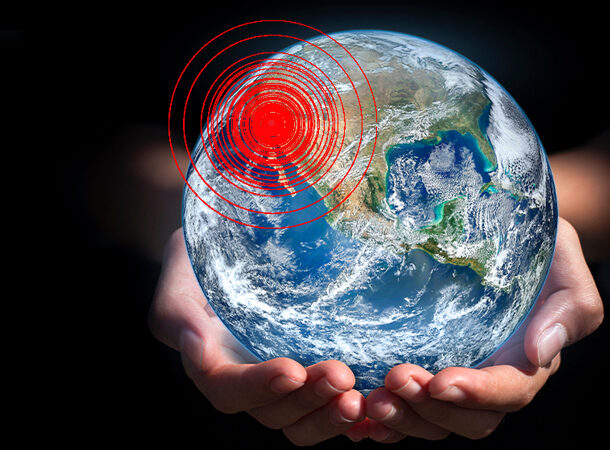 https://www.stuff.co.nz/national/nz-earthquake/108956850/strange-seismic-waves-rippled-around-the-world-and-scientists-dont-know-why
https://www.stuff.co.nz/national/nz-earthquake/108956850/strange-seismic-waves-rippled-around-the-world-and-scientists-dont-know-why On November 11, 2018, monitoring stations worldwide detected weird seismic waves that lasted around 20 minutes and traveled thousands of kilometers. They tripped earthquake sensors, but no one above ground could feel them. The initial location was traced back to Mayotte, an island between continental Africa and Madagascar. This region has been afflicted by earthquakes, with a decrease in the months preceding the catastrophe. However, no earthquakes were observed on November 11, particularly none capable of producing the seismic signal. The odd signal resembled a burst of energy rather than an earthquake.
One seismologist compared the Mayotte signal to a North Atlantic earthquake of 6.3 magnitude. Although both signals were visible, they had drastically distinct appearances. An earthquake often produces energy over a wide range of frequencies and times. Some scientists believe the activity was likely made by an undersea volcano north of Mayotte. Another idea is that the event was triggered by an unacknowledged slow earthquake.
The Continental Drift Theory
 http://www.icr.org/article/78/
http://www.icr.org/article/78/ The theory of Continental Drift has been with us for a very long time. In fact, it was first proposed in the 1500s. According to the theory, the world’s continents drift relative to one another across the ocean. Later, it was refined into the theory of Plate Tectonics, which reasons that tectonic plates on the ocean floor move around slowly, in the process separating continents and forming oceans over millions of years. However, science has yet to explain what caused these plates to move in the first place, and studies show that the theory falls short when it comes to completely explaining the phenomena.
One unpopular theory in the scientific world – for obvious reasons – has suggested that due to the unexplained nature of the theory’s workings and the evidence against it, the continents may have been divided much faster (than many millions of years) by an unforeseen catastrophe such as a major flood. Now we don’t have to tell you where you can read about that, do we?
The Mysterious Antarctic Particles
 https://www.livescience.com/63692-standard-model-broken-supersymmetry-new-physics.html
https://www.livescience.com/63692-standard-model-broken-supersymmetry-new-physics.html Physicists witnessed a high-energy particle blast toward space from Antarctica’s ice, and they need to figure out why or how it happened. However, they believe it was some kind of cosmic ray. Unfortunately, the particles that make up the Standard Model of particle physics aren’t supposed to be able to travel in that way. But it was precisely what NASA’s Antarctic Impulsive Transient Antenna (ANITA) detected in March 2016. It is well known that low-energy particles can travel thousands of kilometers through the Earth without being damaged. High-energy particles, on the other hand, behave differently because their vast cross-sections increase the likelihood that they will collide with something when they enter the Earth. As a result, they do not survive.
Most scientists believe ANITA recorded a whole new, as yet unidentified, type of particle. Some theories propose an unusual distribution of dark matter within Earth and a form of sterile neutrino that seldom collides with matter. According to Penn State researchers that integrated data from ANITA and IceCube, a different Antarctica-based neutrino observatory, the particles exploding through the ice toward space have less than a 1-in-3.5-million possibility of being part of the Standard Model of particle physics.
The Space Roar
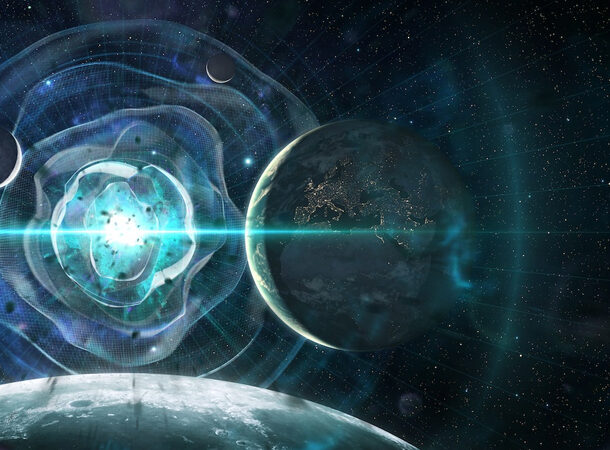 https://www.space.com/space-roar-loudest-sound-in-the-universe.html
https://www.space.com/space-roar-loudest-sound-in-the-universe.html Scientists were trying to gather insight into our universe’s early stars when they encountered an obstacle in 2006: an unidentified noise that severely hindered their research. Scientists have yet to learn what the noise could be. While sounds cannot travel through space, radio waves can – which is what they believe they are – but they are unsure of their origin.
It’s also worth noting that this sound is six times louder than we would expect from radio waves. Scientists have no explanation for it. What they do know is that it is not any of the radio waves, dust particles, or early stars that we currently know of. So there is that…
Ultra-High-Energy Cosmic Rays
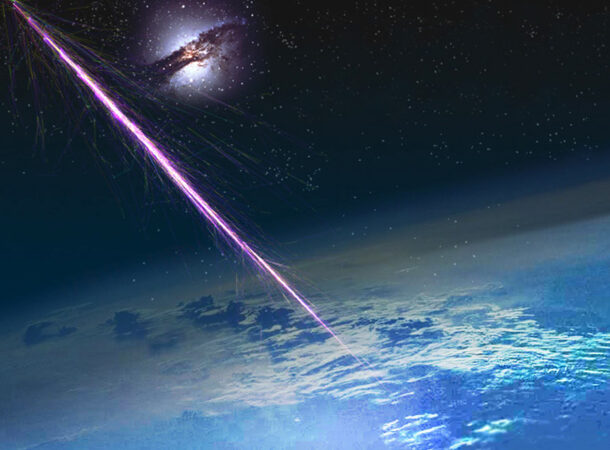 https://journals.aps.org/prl/abstract/10.1103/PhysRevLett.10.146
https://journals.aps.org/prl/abstract/10.1103/PhysRevLett.10.146 Our atmosphere gets bombarded with high-energy particles or “cosmic rays” from space on a regular basis. Although they are not harmful to people, they fascinate physicists. We’ve learned a lot about astrophysics and particle physics by studying cosmic rays. But some – the ones with the most energy – remain a mystery to this day. In 1962, Livio Scarsi and Dr. John D. Linsley witnessed something amazing at the Volcano Ranch experiment: an ultra-high-energy cosmic ray displaying energy upwards of 16 joules. To put it into perspective, one joule is roughly the amount of energy required to move an apple from the ground onto a table. However, All that energy is concentrated in a particle one hundred million billion billion times smaller than an apple. That means it’s going at nearly the speed of light!
Physicists are still trying to understand how these particles acquire such enormous amounts of energy. Some suggest that they originated from supernovae, which occur when stars explode at the end of their lifespans. The tiny particles could also be accelerated in disks of collapsing matter that form around black holes.
The Missing Dark Matter
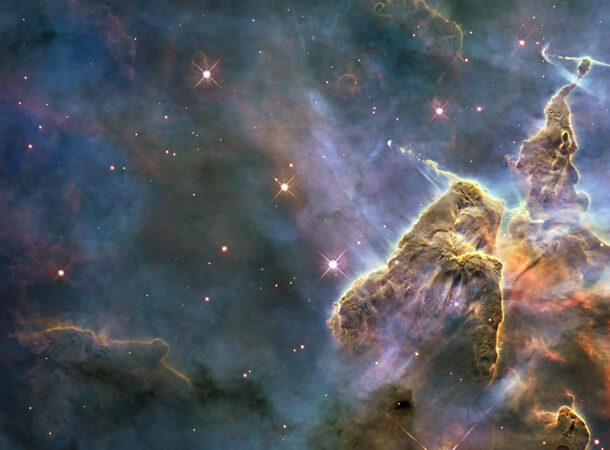 https://news.nationalgeographic.com/2018/03/dark-matter-galaxy-gravity-dragonfly-physics-space-science/
https://news.nationalgeographic.com/2018/03/dark-matter-galaxy-gravity-dragonfly-physics-space-science/ The world’s current view is that galaxies are created from a halo of dark matter. As such, it goes without saying that a galaxy should not be able to form without dark matter. In 2018, Pieter van Dokkum and his colleagues discovered NGC1052-DF2, a galaxy that appears to be devoid of dark matter. The discovery left astronomers scratching their heads. The absence of dark matter in this galaxy would, in fact, confirm the existence of the substance while casting doubt on our present understanding of how galaxies form.
To figure out some sort of answer, leading scientists believe that we need to revise our understanding of gravity. However, other gravity theories still contain something that resembles dark matter on a galactic scale. As a result, van Dokkum believes that if a law of gravity applies to one galaxy, it should apply to other galaxies in the same way. As such, because the mimicking factor is always there, every galaxy should appear to have dark matter (even if it doesn’t). This brings us to van Dokkum’s perplexing conclusion. If all galaxies should appear to have dark matter, the inability to detect dark matter in NGC1052-DF2 implies that dark matter exists. Scientists continue to debate the issue.
Faster Than The Speed of Light
 https://physics.stackexchange.com/questions/52249/how-does-faster-than-light-travel-violate-causality
https://physics.stackexchange.com/questions/52249/how-does-faster-than-light-travel-violate-causality Einstein’s special relativity theory guided us to the assumption that nothing can travel faster than the speed of light. In fact, relativity predicts that for anything with mass to travel at the speed of light, limitless energy is necessary. This can be seen in the ultra-high-energy cosmic rays we discussed earlier. They have astounding energy for their size, yet they can’t travel this fast. When we approach the speed of light as a “hard limit,” it may also explain why communication with alien civilizations is unlikely. If they experience the same constraints as us, our signals would take thousands of years to reach each other.
If there was a means to communicate matter or information faster than the speed of light, it would definitely change our world because, you see, faster-than-light travel defies causality—the relationship between both the causes and effects of events.
Because time and space are interconnected under special relativity, information moving faster than the speed of light would make it possible for someone to get information about an event before it “happened” – a type of time travel, if you will. Faster-than-light communication would result in endless paradoxes we have no idea how to resolve. So, it appears unlikely that it exists. However, if you manage to create it, please contact us about it yesterday.
The Other Studies on the Speed of Light
 http://www.livescience.com/7186-enduring-mystery-light.html
http://www.livescience.com/7186-enduring-mystery-light.html While studies on the speed of light have not completely debunked the assumption that it is the fastest anything can go, there is growing evidence that it may not be accurate. Dark energy is moving faster than ever as time goes on. They’ve also discovered that assuming the Big Bang theory is correct, the universe expanded much faster than light speed when it was in its infancy. Some scientists have even clocked pulses that exceed the speed of light in carefully controlled studies.
So, while it remains to be seen if we will ever travel faster than the speed of light, we may be less restrained than we previously believed. So far, this conundrum has remained unresolved, but science is coming closer to a solution.
The Question About Wave-Particle Duality
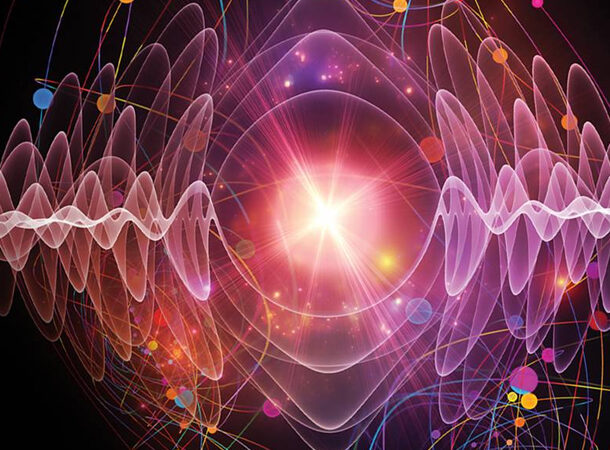 http://www.scientificamerican.com/article.cfm?id=quantum-delayed-choice
http://www.scientificamerican.com/article.cfm?id=quantum-delayed-choice Scientists have long debated whether light behaves like a wave or a particle. However, extensive research has revealed that the true nature of light is more intricate than everyone previously thought. Through experiments, scientists have shown that a photon can act as both a particle and a wave at the same time. Additionally, they have found evidence demonstrating that a photon can decide to exhibit either particle-like or wave-like behavior when it gets forced to decide (under controlled conditions, of course).
The reasons behind this phenomenon remain elusive, and scientists are working very hard to unravel the mystery. It has even been dubbed “the one true mystery of quantum mechanics” by our learned fellow humans.
The Theory of Inflation
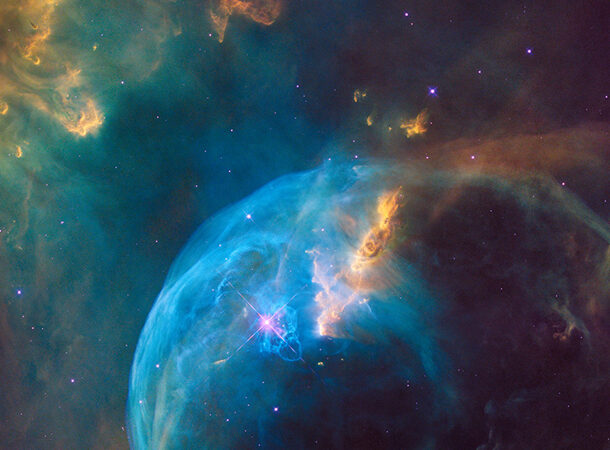 http://www.ctc.cam.ac.uk/outreach/origins/inflation_zero.php
http://www.ctc.cam.ac.uk/outreach/origins/inflation_zero.php The “cosmological principle” is the assumption that there is roughly the same amount of “stuff” everywhere in the universe – meaning the universe is exceptionally flat on a large scale. However, the Big Bang theory argues that there must have been some significant changes in density in the early cosmos. As a result, it was more lumpier than our universe is now.
The theory of inflation suggests that today’s cosmos emerged from a tiny portion of the early universe. This tiny portion rapidly and dramatically expanded – much faster than the known universe is expanding today. Inflation, like drawing on a balloon and then filling it with air, “stretched out” all the lumps in the early cosmos and explains why we have an essentially flat universe today (where conditions resemble one another wherever you go). Although this explains much of what we see, physicists still don’t know what activated the inflation. Details about what happened during this inflation are equally hazy. A greater understanding of this period could teach us a lot about the universe today.
The Baryon Asymmetry Problem
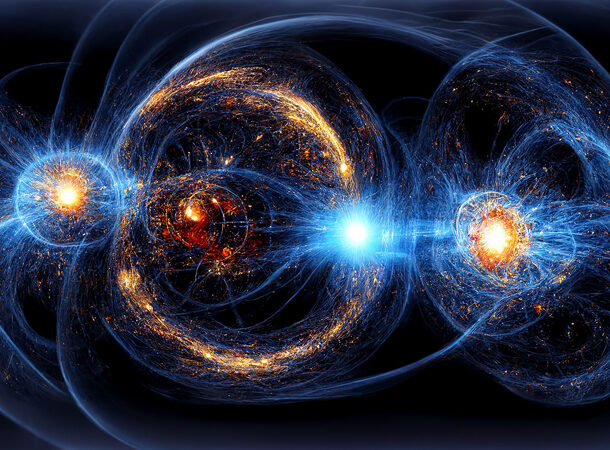 https://www.sciencedirect.com/science/article/pii/S0370269321007814
https://www.sciencedirect.com/science/article/pii/S0370269321007814 A fraction of a second after the Big Bang, our universe was filled with particle-antiparticle pairs that, when they came into contact with each other, obliterated each other, leaving nothing but pure energy behind. But here’s the problem: if this perfect balance were the norm, we’d have a universe made entirely of energy. Yet here we are, enveloped by a universe full of matter.
This means that particles survived when they shouldn’t have, creating everything we see today. The favored survival of matter over antimatter is known as the Baryon Asymmetry Problem. To try to understand this, scientists hope to examine particles with CERN’s Large Hadron Collider. One possibility is that the laws of physics did not exist at the time of the Big Bang. Scientists have made some observations using processes such as charge-parity violation, but we are still trying to explain what we know.
The 2018 Noctilucent Clouds
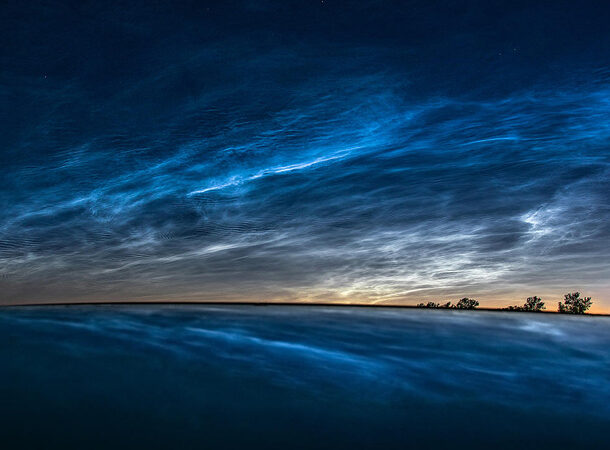 https://spaceweatherarchive.com/2018/08/15/a-mystery-in-the-mesosphere/
https://spaceweatherarchive.com/2018/08/15/a-mystery-in-the-mesosphere/ The mesosphere, or the region of the atmosphere closest to space, is extremely cold and dry. In the summer, ice crystals the size of cigarette smoke particles grow around dust, most likely from meteoroids, in temperatures as low as -125 degrees Celsius (-193 degrees Fahrenheit). When this happens, it produces noctilucent clouds, stunning blue displays of wispy clouds that appear immediately after sunset. These captivating clouds were first seen around two years after Krakatoa’s eruption in the 1880s, and it took scientists up to 2006 to answer questions about their nature and formation.
A new mystery recently emerged regarding the persistence of noctilucent clouds during the 2018 summer season. They can be seen every year and follow a predictable pattern, appearing in May, intensifying in June, and disappearing by late July. However, in 2018, these beautiful night lights intensified in July and lasted far into August.
Using data from NASA’s satellite-based Microwave Limb Sounder, scientists from the University of Colorado discovered that a rise in moisture caused the noctilucent clouds’ prolonged effects. They are still trying to pinpoint the exact cause for the increase in moisture. However, one theory is that planetary wave motion in the southern hemisphere created more moisture in the northern atmosphere than the usual averages.
Saturn’s Mysteries
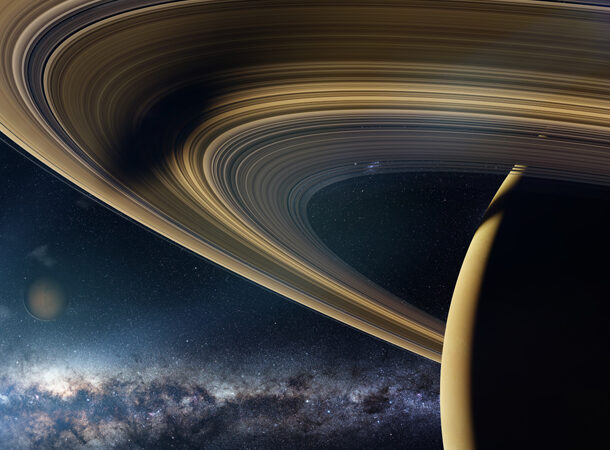 https://www.space.com/30665-unraveling-saturn-ring-mystery.html
https://www.space.com/30665-unraveling-saturn-ring-mystery.html For all the talk about populating space, we need to remember that impossibly large sections of the solar system, much alone the galaxy and beyond, are already rather dull. While we’re sure that visiting extraterrestrial worlds would be exciting at first, we’d soon realize that there’s little to do in space. On the other hand, Saturn violates all expectations of how uninteresting space should be. Every time we visit Saturn or one of its many moons, we discover something new and unexpected.
Consider its rings, which keep getting more mysterious as we try to fully understand them. We know they’re formed of ice and rock and that the gravity of Saturn’s 62 moons causes them to create outward waves. However, as some new studies imply, they also have inward-moving waves, which scientists find perplexing – to say the least. They don’t know what’s causing them, but future missions should reveal more.
What Is Most of the Universe Made Of?
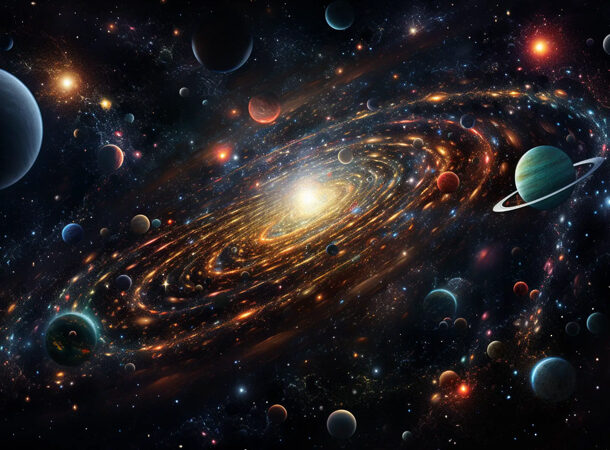 https://www.cfa.harvard.edu/big-questions/what-universe-made
https://www.cfa.harvard.edu/big-questions/what-universe-made Apart from the clusters of planets, stars, and the like, people tend to believe that the universe is empty (we call it space, after all). However, the total mass of all those items, all matter, amounts to less than 5% of the universe. The remaining 95% consists of dark matter and dark energy, which we do not currently understand.
We only know how much there is because we can see how it influences the universe’s expansion. We know it does not make up the stars, planets, or the rest of the universe. We know it’s not antimatter because we can see the explosive reactions between matter and antimatter. There are only a handful of other knowns. Scientists are left with conflicting views, but with so little evidence to back them up, nobody is likely to win the debate anytime soon.
Dark Energy and Dark Matter
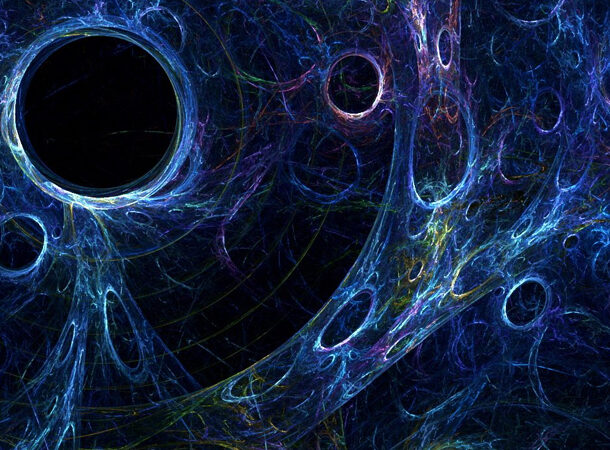 https://www.space.com/20929-dark-energy.html
https://www.space.com/20929-dark-energy.html Physicists discovered decades ago that stars on the outskirts of galaxies were orbiting the centers of those galaxies faster than expected. To explain this, astronomers hypothesized that unseen “dark” matter in those galaxies led the stars to spin faster. Following this, measurements of the expanding cosmos led physicists to believe that there had to be a lot more dark matter out there – five times as much as visible matter. Alongside this, and thanks to the items on our list before this one – we know that the universe’s expansion is accelerating, and when combined with the fact that the universe is flat – yes, space-time is not curved – cosmologists needed an explanation for something that balances matter’s gravitational attraction.
“Dark energy” was the satisfactory response. Most of the energy in the universe cannot be locked up in matter but instead drives the universe’s expansion. Physicists think that dark energy accounts for at least 70% of the energy in the universe. Many diverse observations of the universe suggest the existence of dark energy, but it remains a mystery. In a very real sense, “space just likes to expand,” and we can only observe it expanding at incredibly large scales. For all we know, the explanations for dark matter and dark energy are both wrong, and an altogether new theory might be needed.
The Questions Around Matter and Antimatter
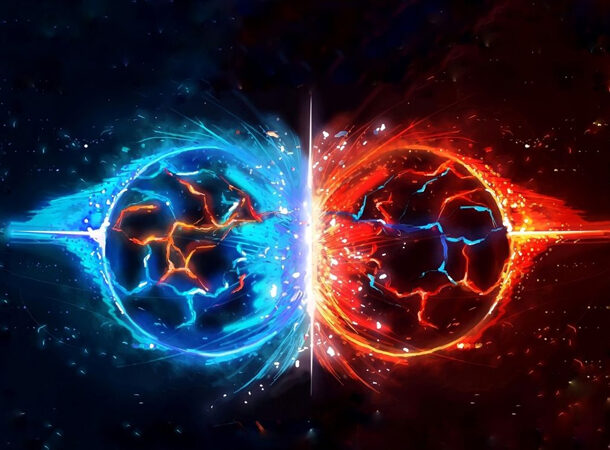 https://www.scientificamerican.com/article/higgs-boson-could-explain-antimatter/
https://www.scientificamerican.com/article/higgs-boson-could-explain-antimatter/ When you delve into these mysteries too deeply, you end up wondering why and how anything exists at all. It’s a bold statement, but hear me out. Every particle has an equal and opposite particle, known as an antiparticle. There are positrons for electrons. There are antiprotons for protons. And so forth. If a particle ever comes into contact with its antiparticle, they annihilate and become radiation. Because we don’t want to be annihilated, it’s a good thing antimatter is extremely rare. Antimatter occasionally falls victim to cosmic radiation and can also be created in particle accelerators for trillions of dollars per gram. However, it appears to be incredibly rare in our universe.
This is a genuine mystery. We just do not understand why matter, rather than antimatter, prevails in our universe. Every known process that converts energy (radiation) into matter yields the same quantity of matter and antimatter. So, if the universe began as an energy-dominated cosmos, why didn’t it produce equal amounts of matter and antimatter? We just don’t know.
The CMB Cold Spot
 https://phys.org/news/2022-12-supervoid-doesnt-mysterious-cmb-cold.html
https://phys.org/news/2022-12-supervoid-doesnt-mysterious-cmb-cold.html Cosmic microwave background (CMB) is best explained as the radiation left over from the Big Bang. It spans the entire universe. However, there are a few minor exceptions. These serve as cosmic breadcrumbs, leading back to the beginnings of the cosmos. However, a region known as the Cold Spot is not playing by the rules. Its sheer size and somewhat lower temperature are enough to make cosmologists ask why.
The most common theory suggested that the CMB passed through the equivalent of a vast cosmic desert known as a supervoid. Due to their expansion over time, these barren zones can zap energy from light passing through them. It acts as a cosmic toll booth, forcing light to cool and redshift more than usual. A recent study, however, has thrown a wrench in the works. According to the findings, known supervoids, even if unseen, cannot account for the cold spot’s temperature drop or intimidating magnitude. Will we ever find out where these cold spots are coming from? Nobody knows.
Does Time Exist?
 https://bigthink.com/starts-with-a-bang/does-time-exist-182965/
https://bigthink.com/starts-with-a-bang/does-time-exist-182965/ You can check your watch and observe the passage of time, so it must be real, right? But is it something we created, or is it a fundamental aspect of the universe like mass, matter, and energy? The scientists are divided into two camps: those who believe it exists but don’t know how and those who believe it doesn’t exist at all (I should emphasize that the majority fall into the first camp).
Scientists often consider time the fourth dimension: anything can be assigned four numbers depending on its position (X, Y, and Z) and time. However, general relativity asserts that time has different values for different observers because gravity distorts and dilates time differently from place to place. So, if each observer of a point in time has a distinct definition of time, does that point in time really have a definition? Some physicists believe the answer is no, that we simply impose sequences onto occurrences to better understand them because our perception is imperfect.
Where Are All The Aliens?
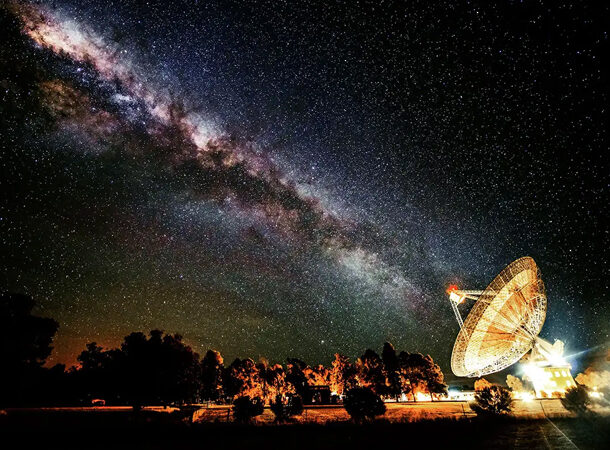 https://www.space.com/25325-fermi-paradox.html
https://www.space.com/25325-fermi-paradox.html The Fermi paradox, named after the great scientist Enrico Fermi, focuses on a very important cosmic question. We know there are billions of galaxies in the universe, right? And each has billions of stars, some orbited by planets. So, it is mathematically justified to assume that other intelligent life forms exist.
However, despite all our best efforts, we have found no actual proof of the existence of alien civilizations. And that brings us to the same question Fermi had. “Where are all the aliens?”
One theory is that the costs of interstellar travel are pricey, even for advanced civilizations. A different theory argues that the universe is teeming with civilizations, and we just happen to be in the cosmic equivalent of a wasteland. One of the more outlandish beliefs is that we are part of a cosmic zoo in which other advanced species monitor us but do not interact with us, purposefully keeping us in the dark. Creepy.
All The Weird Things About Interstellar Space
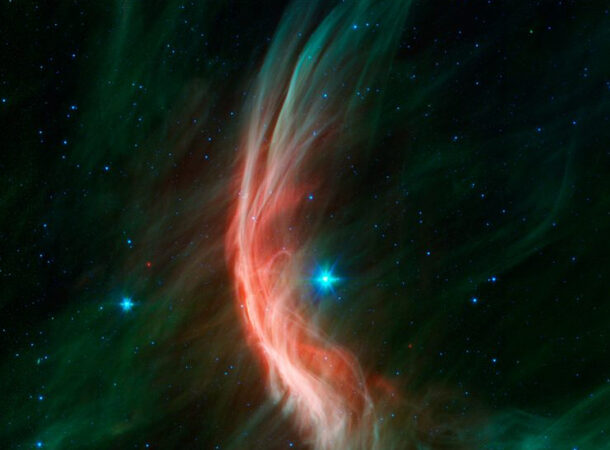 https://www.nationalgeographic.com/science/2019/11/interstellar-space-weirder-than-expected-nasa-voyager-2-reveals/
https://www.nationalgeographic.com/science/2019/11/interstellar-space-weirder-than-expected-nasa-voyager-2-reveals/ While we are certainly closer to answering some of the world’s greatest enduring mysteries than we were a century ago, we still need to be closer. There are still many things we need to understand about what’s out there, exacerbated by the fact that every new technology that should bring us closer to answers ends up adding even more questions. Take, for example, the two Voyager crafts – the technology we sent into interstellar space. One of their primary goals was to learn what happens outside the heliosphere: the extent of the Sun’s magnetic field that protects us from nearly every type of radiation.
However, what we discovered there contradicts our calculations completely. For starters, the magnetic field beyond the heliosphere is two to three times stronger than projected. That means interstellar particles exert ten times the electromagnetic pressure previously anticipated, which is bewildering for scientists who rely on those calculations to better understand the universe. They also discovered several leakages in the region between the heliosphere and interstellar space.
The Sun Remains An Enigma
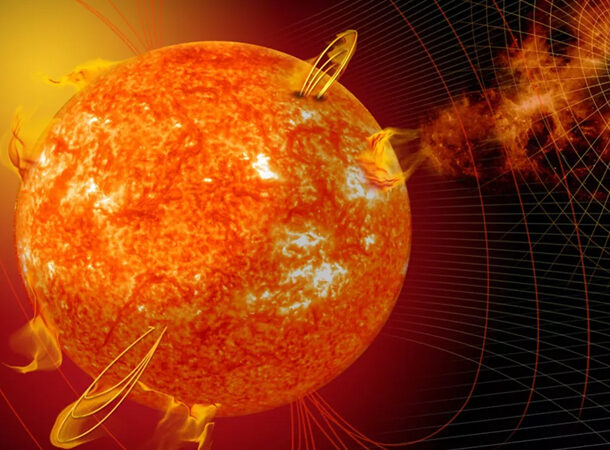 https://www.nationalgeographic.com/science/2019/12/sun-keeps-getting-stranger-parker-solar-probe-shows/
https://www.nationalgeographic.com/science/2019/12/sun-keeps-getting-stranger-parker-solar-probe-shows/ When you think about it, the Sun had to be the most mysterious thing in the world for our ancient ancestors. Of course, our understanding of the Sun has progressed significantly since then. Thanks to contemporary science, we know that the Sun’s heat is generated by complex nuclear fusion reactions in its core rather than fire. Having said that, the Sun continues to hold many mysteries that we may only partially comprehend as it’s impossible to quickly fly over there to take a few readings.
That doesn’t mean we couldn’t raise the bar for how close we could get and get better observations, and that’s exactly what the Parker Solar Probe team did. The probe was the closest we’ve ever come to the Sun, yet instead of answering questions, it generated new ones. For example, the probe discovered that the Sun’s surface is frequently bombarded by intense magnetic waves that briefly reverse the local magnetic field. More importantly, scientists found that the Sun’s waves and solar winds travel at least twenty times faster than any previous model of the Sun. If we could account for that disparity and figure out what’s going on, we’d be in a far better position to protect ourselves against damaging solar radiation that could one day destroy all electricity on Earth.
The Issues Around Universe’s Rate of Expansion
 https://scitechdaily.com/cosmic-mystery-deepens-after-new-measurement-of-the-rate-of-expansion-of-the-universe/
https://scitechdaily.com/cosmic-mystery-deepens-after-new-measurement-of-the-rate-of-expansion-of-the-universe/ If you haven’t already, we recommend reading about how we first realized that the universe is expanding. While the discovery is too extensive for the scope of this list, it demonstrated for the first time in human history that everything, everywhere, is always in motion – quite poetic. It still raised many more issues, such as the rate of its spread, whether it would continue permanently, and what it meant for us.
According to new studies, we’re not only far from finding the answers but also finding things that completely throw us off track. If these recent findings are accurate – and there’s no need to doubt them (after all, they’re scientists) – computations of the universe’s expansion rate continue to yield different results depending on how we measure them. Calculating it from the cosmic microwave background yields an entirely different value than investigating the afterglow of the Big Bang. It contradicts the fundamental rule of math and the universe, which states that the correct answer to a problem is the same regardless of the method used to get it.
Will We Ever Have a Unified Theory?
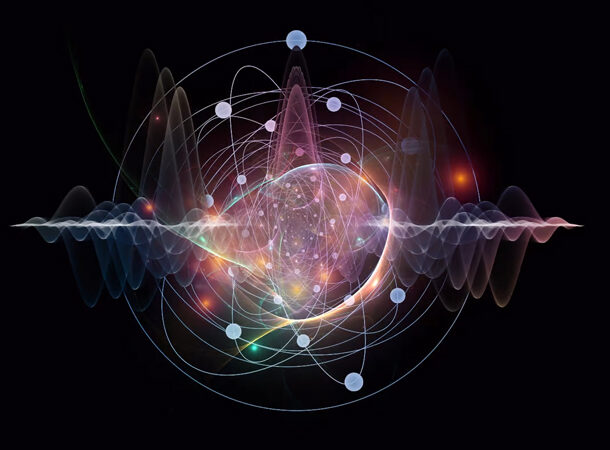 https://aeon.co/essays/how-physics-at-the-roots-of-reality-point-to-a-grand-unified-theory
https://aeon.co/essays/how-physics-at-the-roots-of-reality-point-to-a-grand-unified-theory In the twentieth century, two great theories that explained a lot about physics emerged. The first was quantum mechanics, which described how small, subatomic particles behaved and interacted with one another. The other great theory was Einstein’s general relativity, which explained gravity. Generally speaking, gravity occurs when mass bends space and time, forcing particles to follow curved paths due to space-time being bent. There is only one issue. Neither theory is compatible with the other.
We can’t explain gravity using quantum mechanics, and general relativity doesn’t account for quantum mechanics’ implications. But, as far as anyone can tell, the two theories are both correct. Since this realization, physicists have worked on a solution to reconcile the two theories. This is called the Grand Unified Theory (GUT) or simply the Theory of Everything. By zooming out, physicists hope to see quantum mechanics and general relativity as distinct patches within a larger framework. For now, rhe hunt for a fundamental theory that can explain everything continues. Maybe we’ll never locate it. But physics has taught us that the universe is genuinely amazing and that there are always new things that we can discover.
The Fine-Tuning Problem
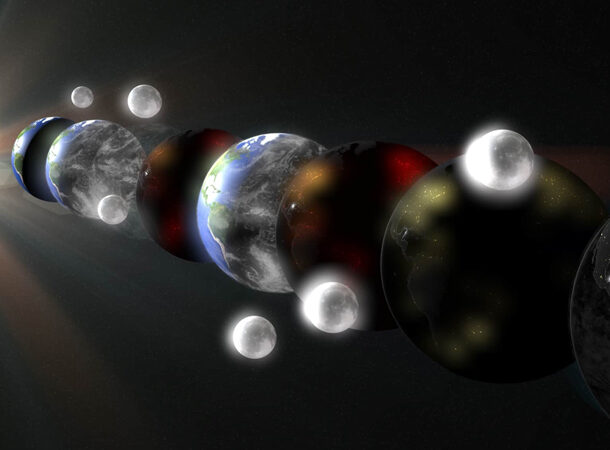 https://history-computer.com/multiverse-theory/
https://history-computer.com/multiverse-theory/ The essence of the Fine-Tuning Problem is the understanding that even little changes within the fundamental rules and constants in the world can result in a universe in which life as we know it cannot survive. Consider changing gravity or our strong nuclear force just a tad – this would mean no stars, planets, chemistry, or, eventually, life. Some of these constants, such as the cosmological constant that influences the pace of expansion of the cosmos, appear curiously fine-tuned to an almost unnatural precision. Does this imply that the world was created with life in mind? According to the scientists, not necessarily.
Some scientists suggest the Multiverse Theory as an explanation in which our universe is just one of an endless number, each with its own set of laws and constants. And we just happen to live in one where the conditions are favorable for life. Essentially, it calls into question our knowledge of the universe, its genesis, and our place in it, generating fresh theories and fueling scientific research.
The Origin of Life
 http://www.telegraph.co.uk/science/large-hadron-collider/9372661/What-is-Higgs-Boson-the-God-Particle.html
http://www.telegraph.co.uk/science/large-hadron-collider/9372661/What-is-Higgs-Boson-the-God-Particle.html Since the beginning of time, the birth of our universe and the origin of life have been the subject of enormous debate and study. Some scientists firmly believe in the Big Bang theory – which most of us had to learn in school. A lot of research has also gone into Abiogenesis, which refers to the ability of life to arise from inorganic materials or the only way for life to begin without being preceded by life. Physicists are investing a lot of energy and focus on understanding the Higgs Boson, which is bringing us closer to establishing the Big Bang theory and other origin theories of the universe.
The Higgs Boson can, however, not be viewed as the be-all and end-all of research. In fact, while it is opening up new territory in the study of physics, it has yet to confirm the Big Bang. Many proponents of intelligent creation further argue that proving the Big Bang theory does not rule out the possibility of a creator. A God could have created and set the universe in motion using scientifically observable processes. Those who advocate this idea invoke Thomas Aquinas’ famous argument about an unmoved mover, which states that the events that formed the cosmos had to have an initial cause.
What we here at List 25 can confirm is that the universe is vast and mysterious, and the origins of life may never be entirely understood.



























